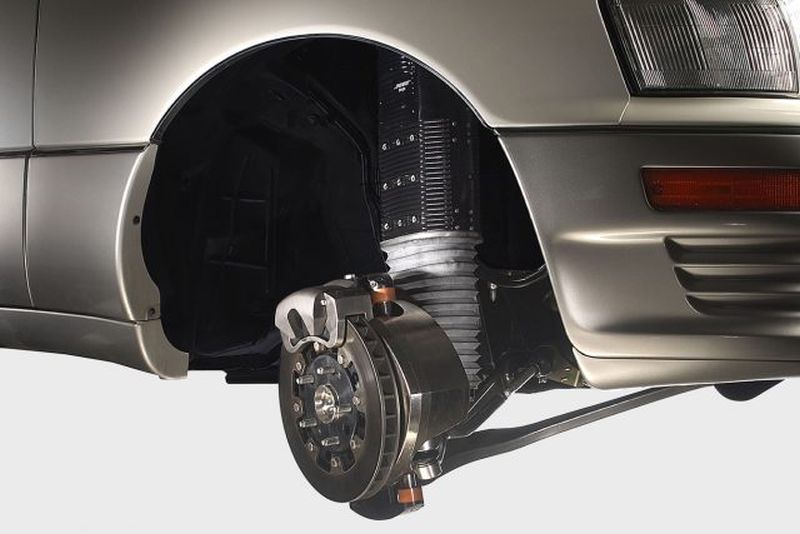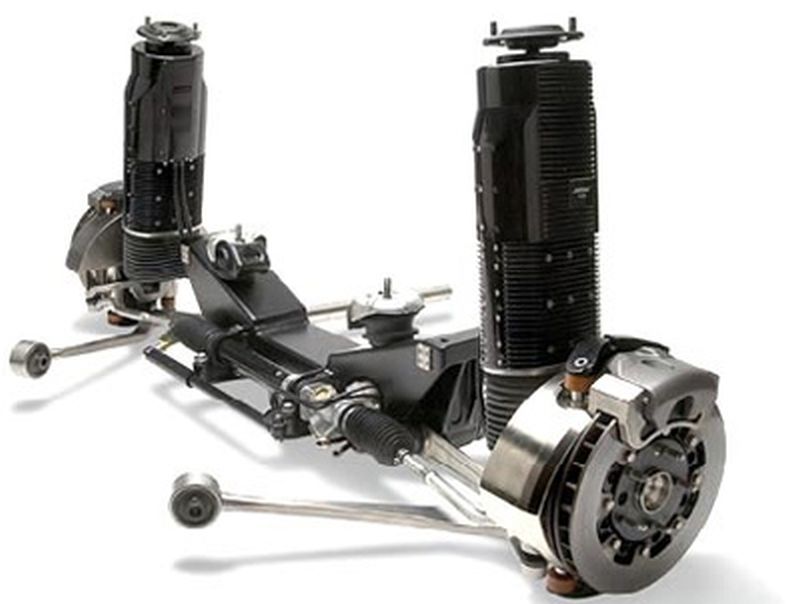Dr. Amar Bose got the idea to adapt electromagnetic driver to car suspension, but the idea could not be developed to a usable form for 37 years. The company did develop prototype cars in 2004, but did not bring the tech to the market. Bose did market electromagnetically suspended driving seats for long-haul trucks, however. Now, the electromagnetic car suspension is being developed for cars. Read on to find out all you need to know about these innovative suspensions:
Electromagnetic car suspension: all you need to know
How the Bose suspension system was developed

Image Source : extremetech.com
The father of the Bose sound systems, which are one of the best in the world, had the great idea that the same idea behind their sound systems could be scaled up and used in the suspension of sports and luxury cars, for better and smooth rides. His idea, as happens often with all brilliant, genius ideas, was before time. It’s only now that the Bose suspension system can be a reality.
Bose believed that the loudspeaker driver, which comprised of an electromagnetic coil and magnet, which pushed the loudspeaker’s cone in ‘n’ out, could be scaled up not only just to move paper cone, but 1,000 pounds of a car around corners. Dr. Bose created the mathematical model for the electromagnetic car suspension. It required better electromagnetic motors, power amplifiers, microprocessor power and control algorithms which were unavailable during his time, but he knew the tech would be developed in time.
The name given to the project was Project Sound in 1980, and it was hidden from employees and media. 24 years later, the company showcased it for the analysts and media. The innovative suspension will take car suspensions to another level. The modern design would allow cars to stay completely flat, making rough roads a thing of the past. The electromagnetic car suspension would actually ‘lift’ the wheel to skip over potholes, and cars would hop over the obstacles on the road.
But unfortunately, Bose could not get the Project Sound off the ground due to the financial crisis which hit on a global scale. But Bose did manage to recoup the R&D costs by another of its companies Bose Ride, through which it sold special seats for drivers using this technology.
The electromagnetic car suspension has now been sold to the company ClearMotion, which has made certain changes to make it to the production status.
How it works
Let’s take a look at how the Bose suspension system works. It is similar to most modern design systems today. The suspension system is made using a clever combination of software and engineering, eliminating the body motions which would remove the obstacles to a smooth driving experience.
The Bose system uses the linear electromagnetic motor or the LEM at each corner of the vehicle’s four corners, instead of the spring-shock setup. How it works on a car, is via the amplifiers would pulse electricity to each motor, and regenerate power from every compression. This is where the major benefit of LEM comes in, as the oscillation range is not limited by inertia gained by the energy dissipation of the conventional dampers which are filled with fluids.
This improves the vehicle’s handling by the management of weight distribution under particular driving situations, while maintaining the center of gravity of the car. The electromagnetic car suspension is able to anticipate the bumps on the road thus avoiding impact completely.
First showing of the tech in 2004

Image Source : s.hswstatic.com
The electromagnetic car suspension was first unveiled in 2004, where Bose displayed unmodified and modified 1994 Lexus LS400 and Porche 911. The cars were driven quite hard over bumps which hit the rear and front axles, and another set raised the left tires but not front right, and then the rears. In the cars which had the Bose suspension, the bumps could hardly be felt. The amazing suspension was not only damping the bumpy roads, but was also counteracting them.
The Lexus had to face a big test – it had to drive at a high speed over railroad tie. The modified Lexus cleared the tie with great comfort, as linear motors went into the expansion mode and the car just lifted off the road, and sailed over the tie with a lot of inches left. At the demo’s end, the Bose representatives pointed out that the cost of production would come down after about a decade. The weight would also have to reduce by 50 pounds each corner.
Though many premiere automobile makers met Bose, no collaboration saw fruition.
ClearMotion comes into the picture
In spite of demonstrating that the technology works on a car, the electromagnetic car suspension could not take off, as it was too heavy, too expensive, and too complex. In 2013, ClearMotion bought rights to Bose’s suspension system. Now, the tech is known as the ‘digital chassis system’, and will probably be fitted in a low volume vehicle in the year 2019. This will be mass-produced in the year 2020.
Advantages of electromagnetic car suspension

When you’re taking a turn at very high speed, it is risky due to the chassis roll but with cars with the electromagnetic suspension, chassis roll is almost negligible. Similarly, when going over bumps, the chassis is not affected due to the new damping tech inside. While travelling in ‘rustic roads’, in rural areas of India, you would not be able to sit comfortably at all, and feel every bump on the road. While riding in a car fitted with the electromagnetic suspension, then the biggest bumps would become almost nil.
The addition of electromagnets controlled by ECU makes it a 100 times more responsive, these suspensions can respond numerous times within just a second, due to the smart ‘stability sensors’ which are controlled by the ECU of the car.
There is a lot of disintegration of the parts in a mechanical system. This problem does not exist in the electromagnetic suspension because they are digital systems with the minimum of mechanical interference, which decreases the maintenance and leads to increased system life.




